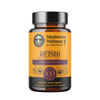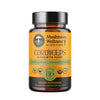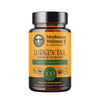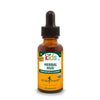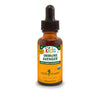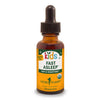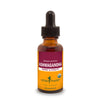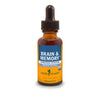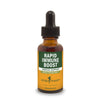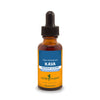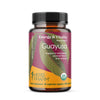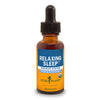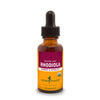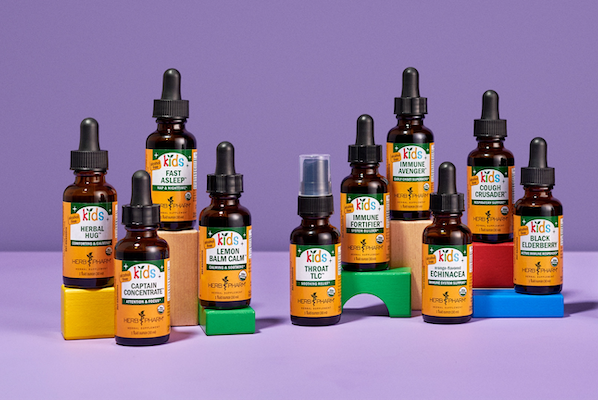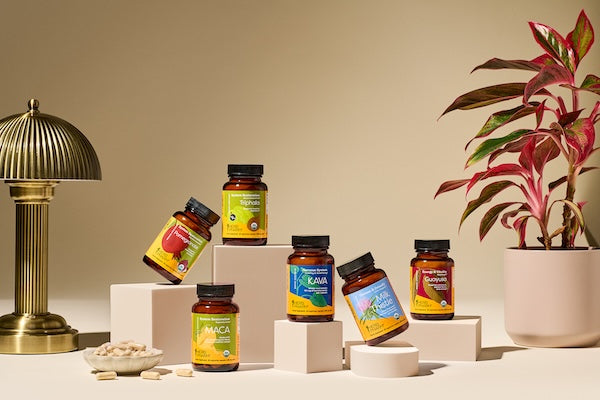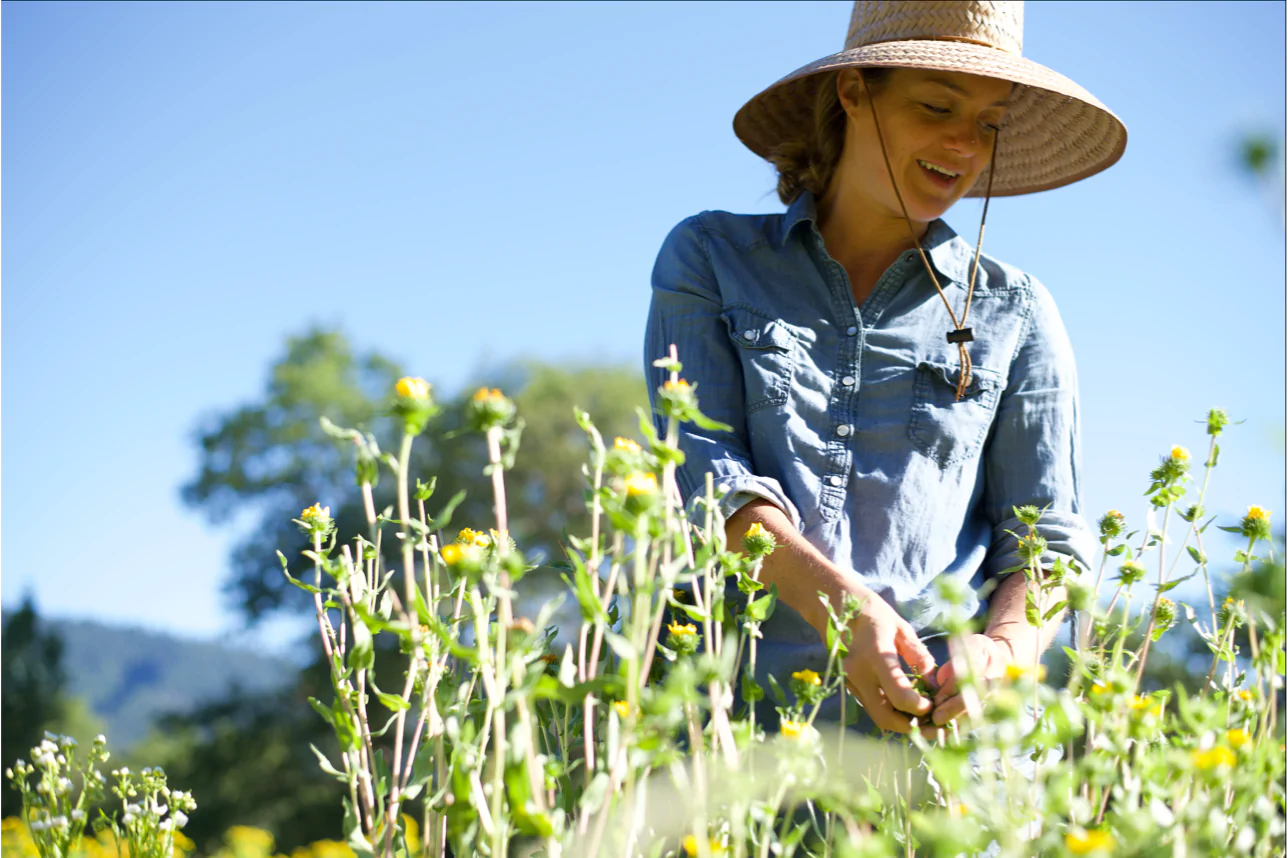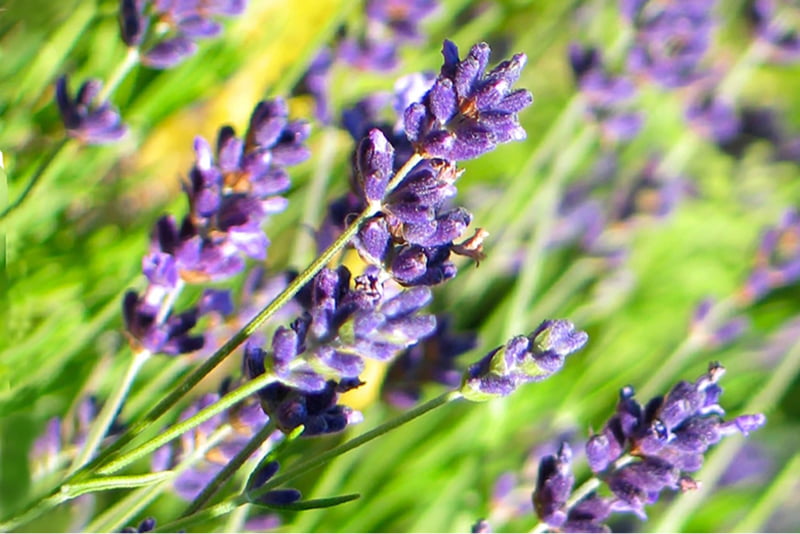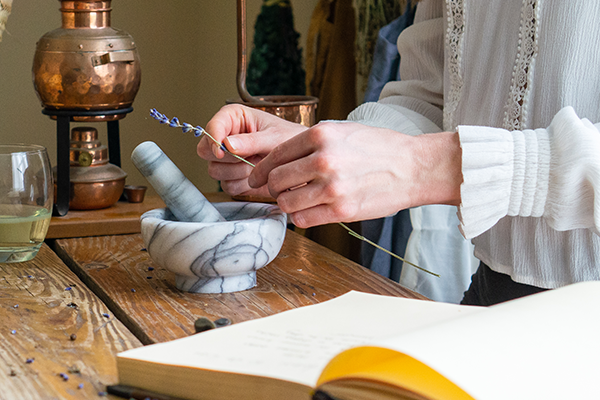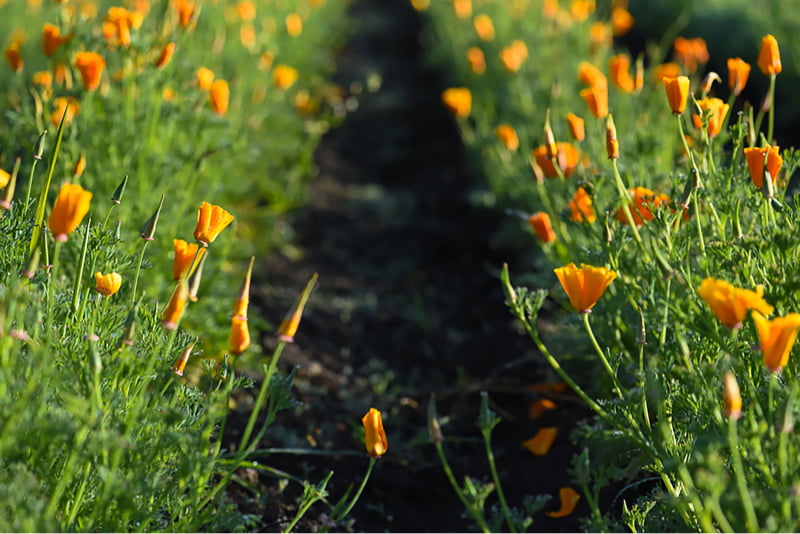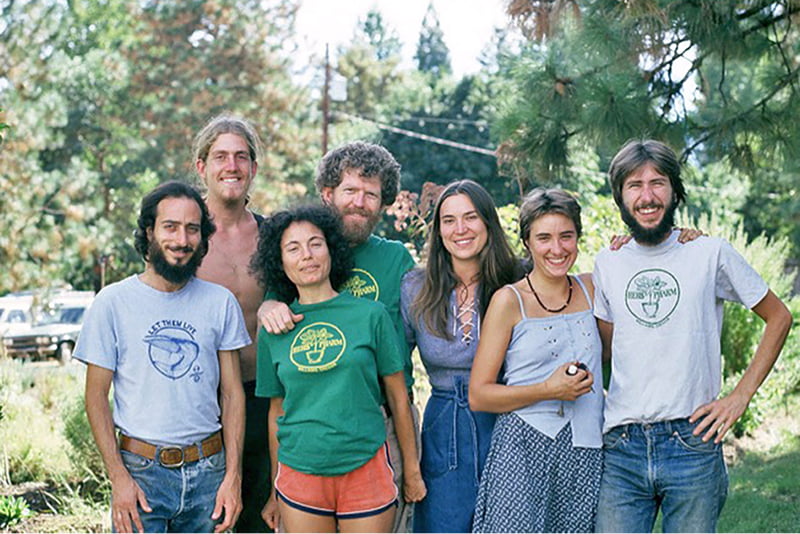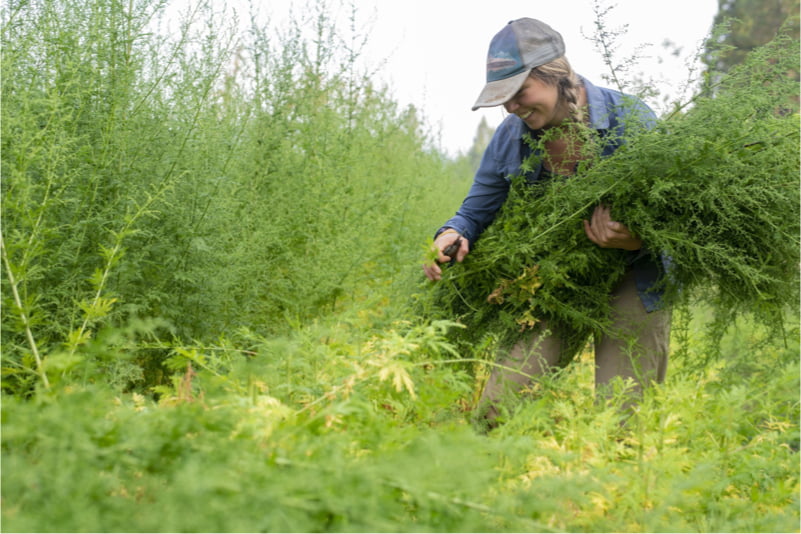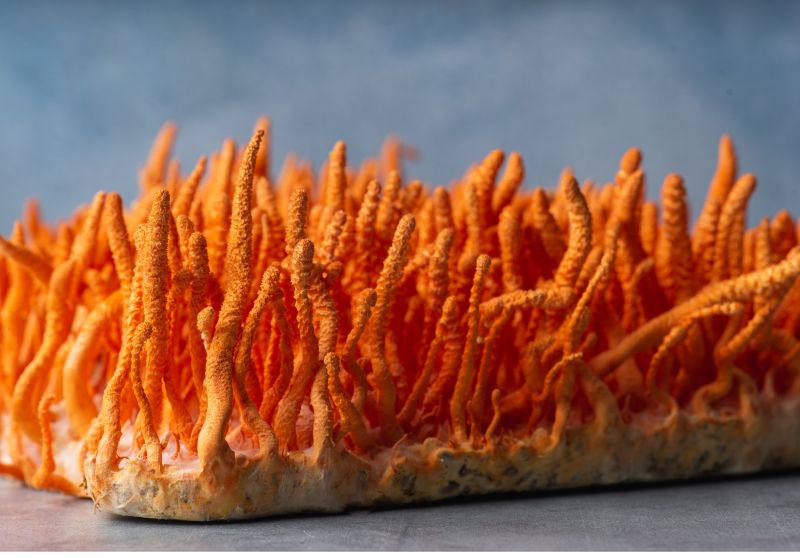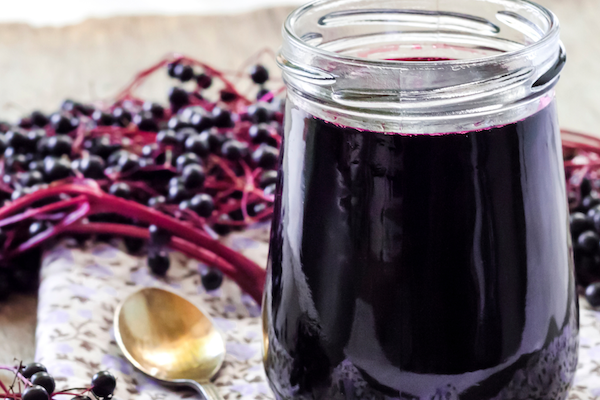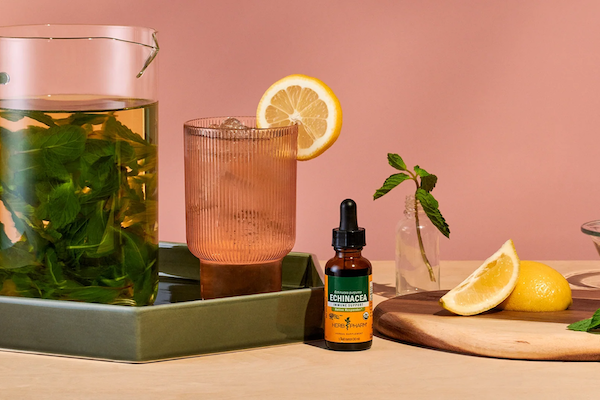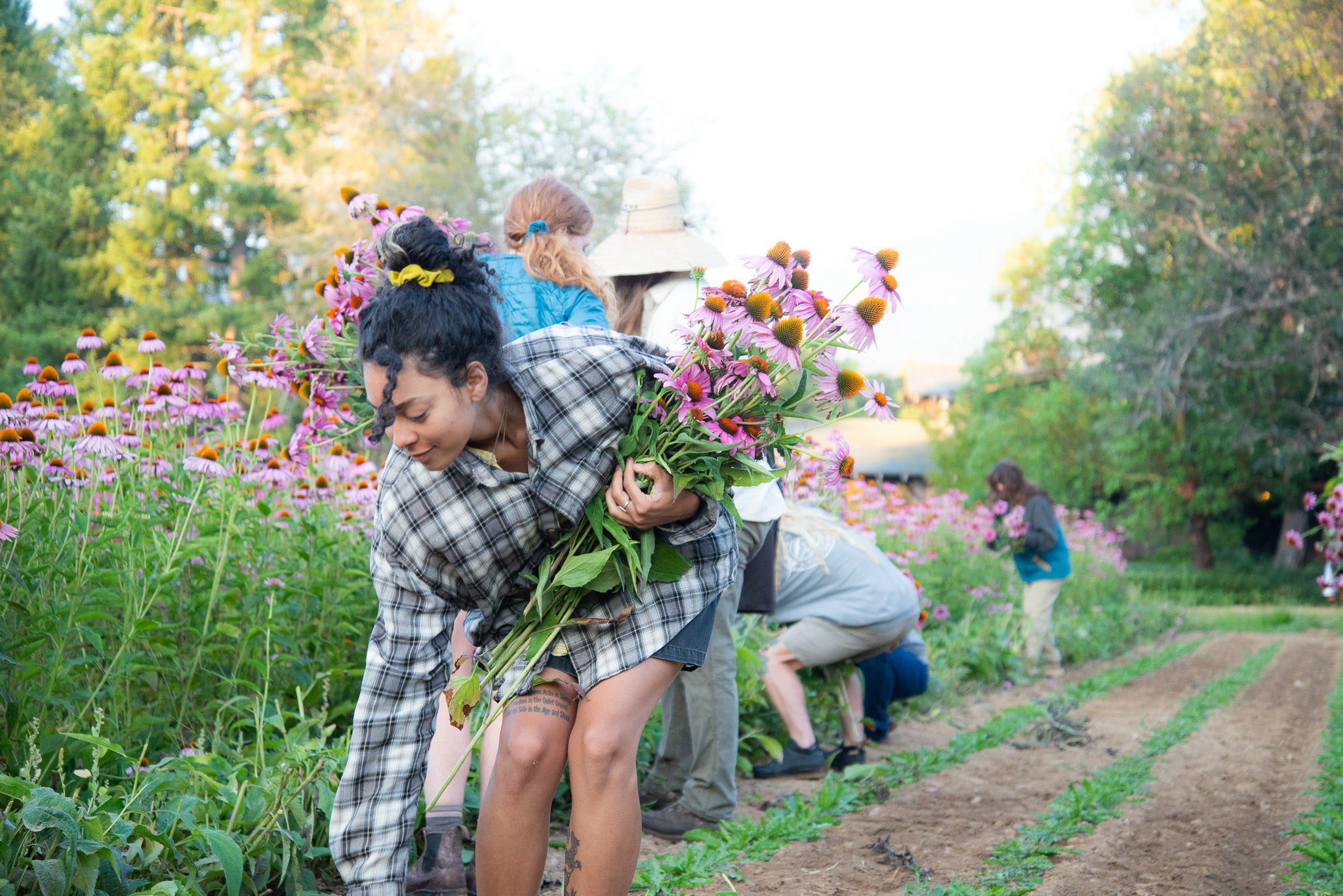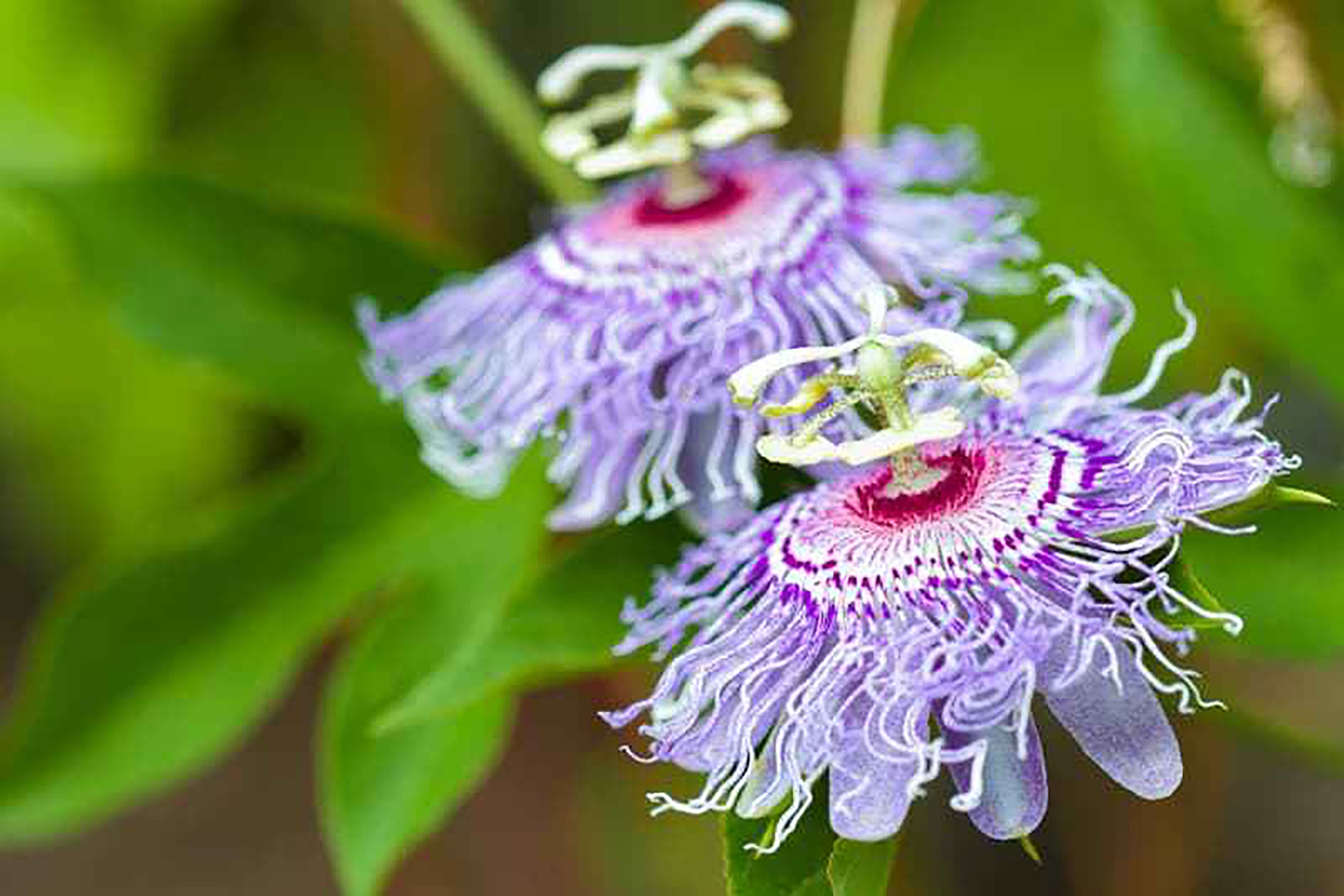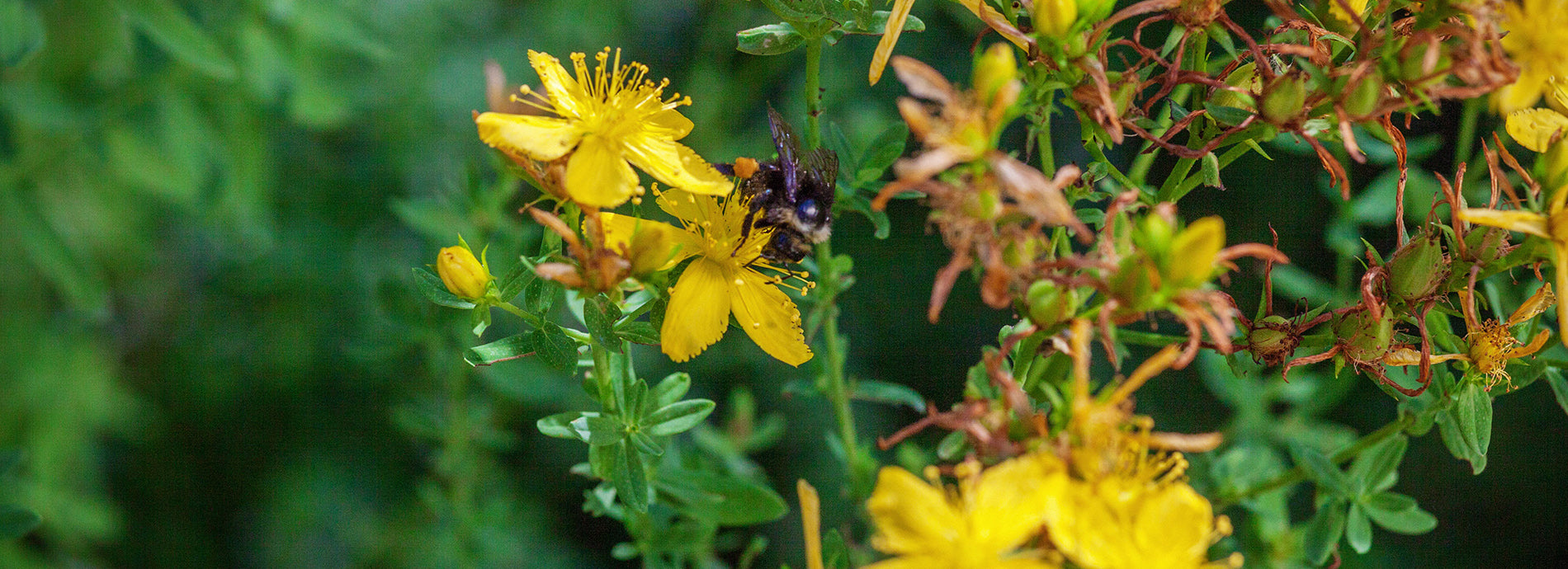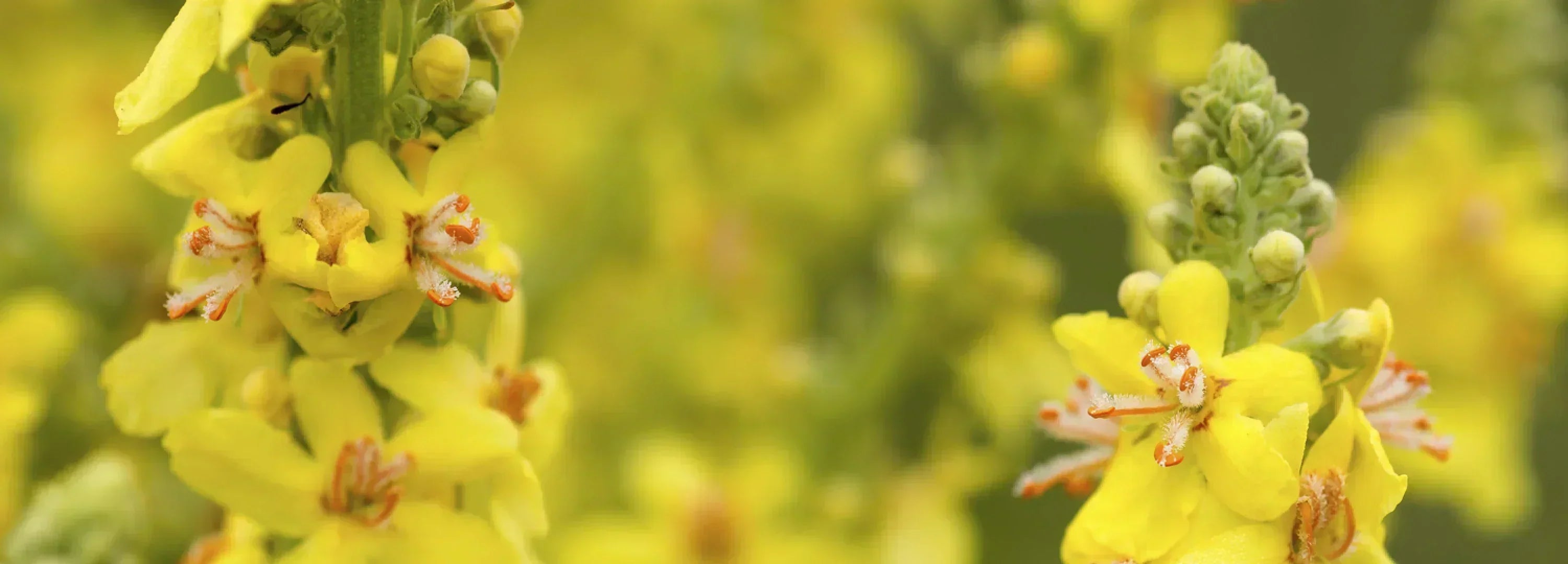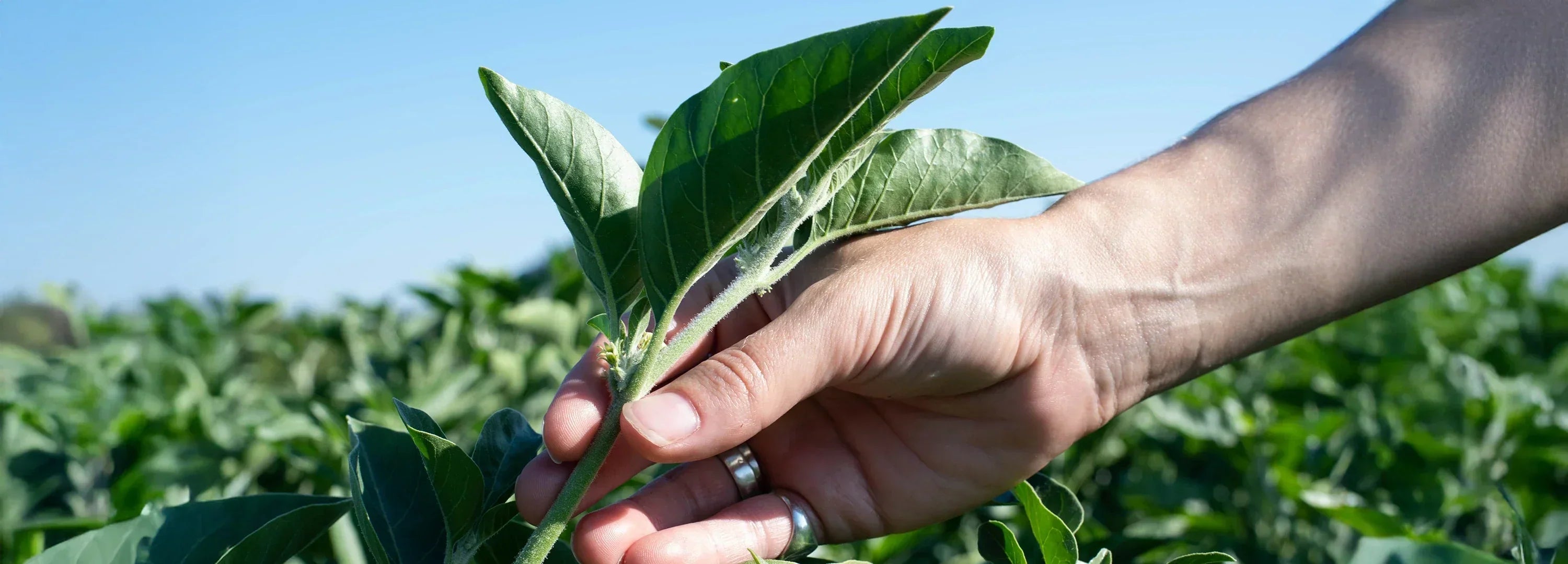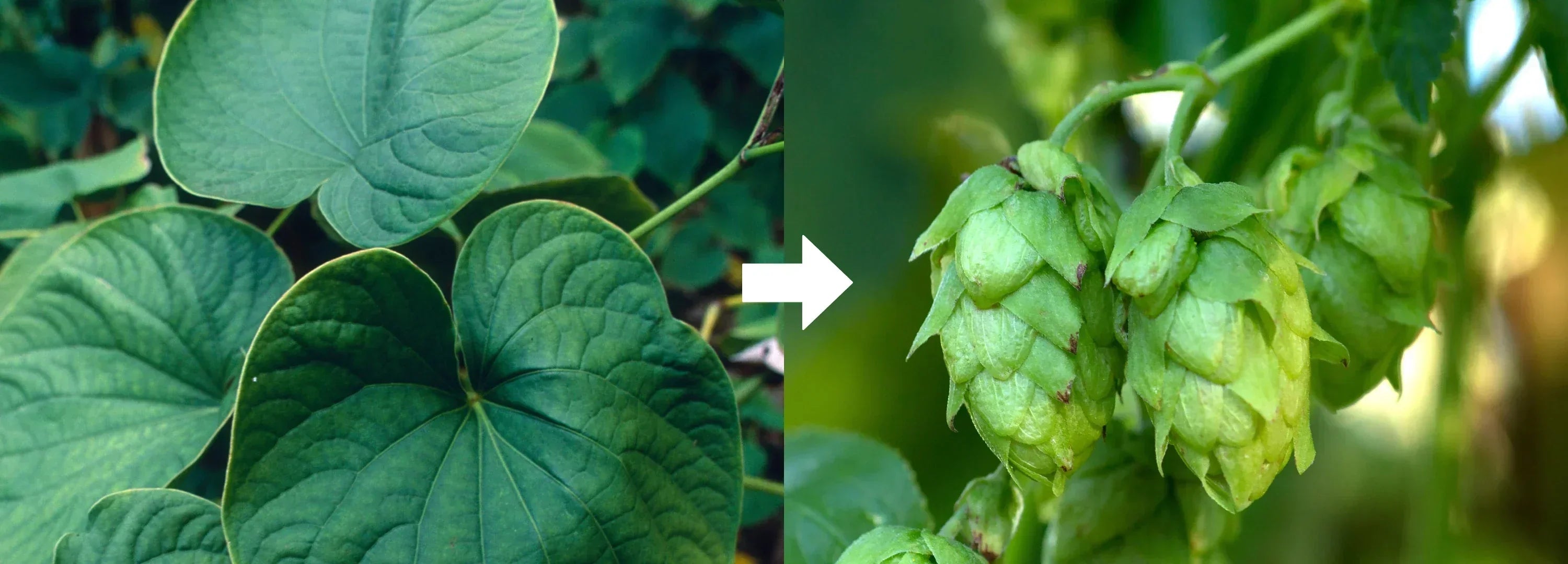At Herb Pharm, we use St. John’s Wort flowering tops, responsibly wildcrafted from its wild habitat. But what
does that mean? And how do people even find St. John’s Wort anyway? Let’s start with some definitions.
Responsibly wildcrafted means we don’t grow the plant on a farm; it’s
picked from the wild. And it’s picked in a way that leaves plant populations safe for future generations.
We use a lot of St. John’s Wort. It’s in formulas like Good Mood™, Nervous System Tonic™, Trauma
Oil™, Inflamma Response™, Virattack™, Soothing Throat Spray™,
and well you get the idea. We need lots of St. John’s Wort every year.
So how do you get St. John’s Wort from the wild?
The easy answer is that we work with talented, dedicated wildcrafters we trust to find the plants, harvest
them and deliver them to us each year. For the long answer, we head out into the wilds of Southern Oregon.
Here’s what it’s like to commercially wildcraft St. John’s Wort for a single day.
Step 1:
Wake up around dawn on a late June morning. Sometime before 6am. Hop in your car and head out, eating on
the road. Take Interstates to state highways to dusty unmarked country roads, tires bouncing on endless
washboard ruts.
Pull over and park on the shoulder behind the head wildcrafter’s pickup. You’ve reached the agreed-upon
middle of nowhere. A big open field edging a forest, turning a waist-high sea of green and yellow. A
secret spot the wildcrafter has been scouting for months that is only just ready to be harvested. In a
few days it will be too late, too yellow, too flowery.
Don your favorite gardening hat. Grab as much water as you can carry. It’s going to be a long one.
Step 2:
The instructions are simple enough. Take this small tool, a mini sickle with a wood handle and a
metal blade shaped like crescent moon. Reach down with your left hand. Grab onto the green part of
plant, just below the yellow sun flowering top. Use the inside of the sickle’s curved blade to cut
back toward yourself, just below fist.
Careful, don’t rush. Don’t cut yourself. Don’t cut too much or too little of the plant. Just enough
to meet spec.
Place your cutting into your harvester bag slung low across your shoulder. Move on to the next plant.
Bend over, grab exactly the right amount, cut carefully, deposit the cutting in the bag. Repeat.
Repeat. Repeat.
It’s tempting to get on auto-pilot. But safe, responsible wildcrafting demands attention. The plants
are scattered about. They grow at different heights. Some are ready to be harvested. Others need to
wait a few days more. Every time you bend, you must make a series of judgements.
And while you’re in a clearing, you’re still out in the woods. Not on nice trails or paths. The
ground is uneven. There are downed logs to step over. It’s bear country. Mosquito country. Hornet
country. And you’re working with a blade. So you must always be mindful of what you’re doing.
Step 3:
After a while, your bag will fill up. For newbies, it can take an hour. For pros, more like
fifteen minutes. When you’re full, head to the white sheets laid out in the shade. Unclip the
bottom from your bag and let the flowering tops fall. Then cover the plants back up with a wet
sheet to keep everything from drying out. This part is easy and fun. It’s over quickly. Then
it’s back out into the sun.
Step 4:
Keep from boiling. It’s hot out there and bone dry by mid summer. Hydrate. Take breaks in the
shade. And stay backcountry smart. No smoking. No open flames. Nothing that turns a lovely
day in the fields into a harrowing day like a wildfire.
Step 5:
The hours drip by. The sheets fill up with a couple hundred pounds of golden flowering
tops.
At some point in the afternoon, the wildcrafter’s partner shows up. He’s there to take
the sheet-loads down to his truck. This is as good a time as any to quit for the day.
But you’ll leave alone. Our wildcrafter stays behind. Camping out in the fields to
maximize his harvesting time. Slowly moving from one field to the next, climbing in
elevation each time to reach the flowers just as they mature. He only has a few days to
hit them all.
Step 6:
While your day is done, the St. John’s Wort is only starting its journey. From the
fields, it heads to our facility in Josephine County, Oregon. There, we extract the
herb fresh. But the steps for that are a different story.
